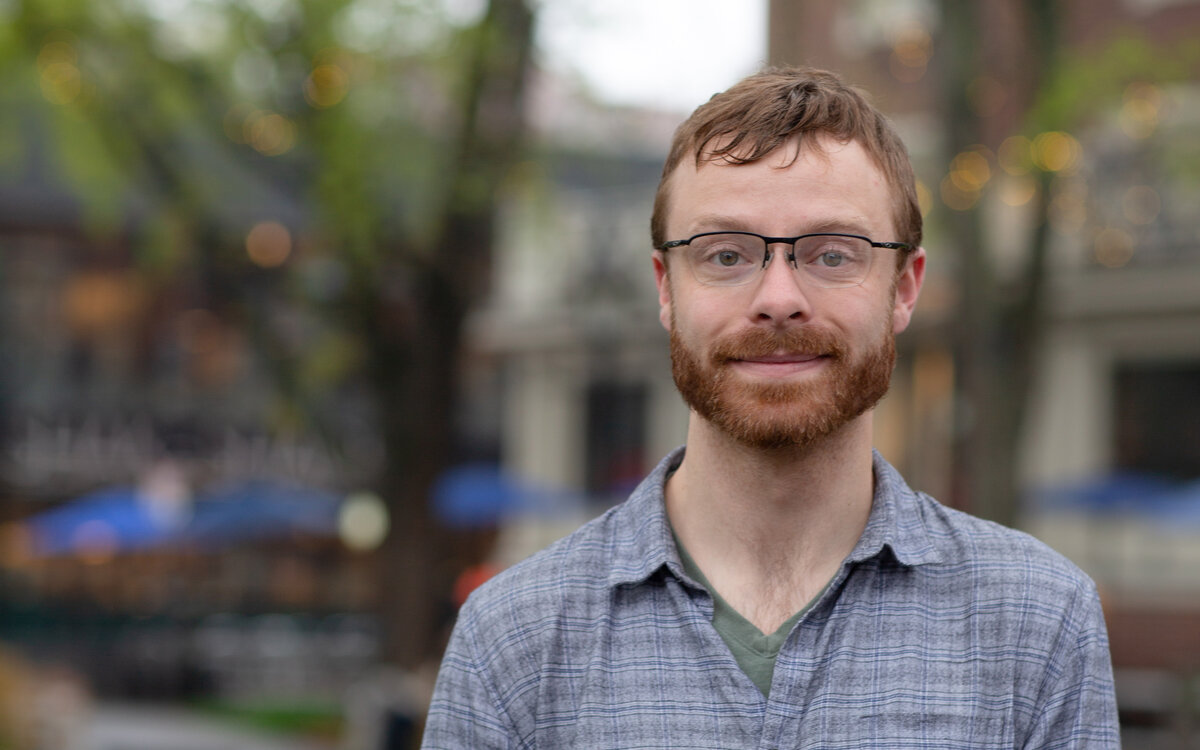Three Questions For Ben Underwood '13

Co-founder of Resonant Energy
Since 2016, Resonant Energy, co-founded by Ben Underwood ’13, has been on a mission: to make solar energy accessible to traditionally underserved communities and public institutions. In that time, they have brought solar energy to 45 nonprofit institutions and 27 middle-to-low-income households. They hope in the next five years to have reached 5,000 rooftops. Marking the second year since they relocated their office to Dorchester, MA in April, The Boston Globe reported on their work in and around the community, where they have become known as the group to go to if you’re a nonprofit looking for solar.
I thought now was the right time to ask: Given the legacy of damage done by forcing people and the planet to work for capital, what can we do to make capital work for people and the planet? Ben Underwood '13
Why did you start Resonant Energy?
I started Resonant Energy in response to feeling overwhelmed by imminent, catastrophic climate change, as so many of us do. And like lots of millennials these days, I feel very ambiguous about capitalism and the effects it has on people and the planet. It’s amorphous, sure, but it’s everywhere, so it’s hard not to want to confront it directly. For the full run of American history, and probably much longer than that, we have given ourselves over to the project of hammering other people and the planet into shapes optimized for the most efficient investment and return of capital. Our country’s embrace of slavery is the worst consequence of this mentality, and our ongoing involvement with the extraction and combustion of fossil fuels is not far down the list. So I thought now was the right time to ask: Given the legacy of damage done by forcing people and the planet to work for capital, what can we do to make capital work for people and the planet?
How does Resonant Energy make capital work for people and the planet?
For all its shortcomings, capital makes it possible to do big things quickly. And when it comes to social and environmental justice in the United States, we have already waited way too long to start moving slowly, now that we are in the position of needing to make planetary changes in less than a decade. We need to invest at least $10 trillion in solar power and other low carbon technology over the next 10 years or we are going to lose the fight against catastrophic, runaway climate change. We will need to use capital to reform our energy infrastructure over the next decade on a scale that rivals what we have done for cars over the past century. And we need to do that in a way that serves everyone. Resonant Energy exists to help move the tides of the vast ocean of capital that we will have to channel into renewable energy over the next decade into communities that capitalists have systematically overlooked. One thing this requires is making solar projects and solar project financing more flexible. With the solar industry in its infancy, projects’ overhead costs are high, and consequently providers have focused on building relatively simple, highly replicable solar projects—our equivalent of black Model Ts. Currently, a solar array can be built on any roof, so long as it’s a residence owned by someone with a high credit score or commercial real estate with an enormous footprint. Most people don’t have high credit scores or own commercial real estate. My company is for them. We meet people where they live, in part, by repurposing capitalism’s own tools. For example, others have neglected to serve historically underinvested communities because underwriting without FICO scores and flush balance sheets is too complex. But we have shown that investment returns from portfolios that include solar projects hosted by people with no or low credit scores and nonprofits are just as good, if not better than those from more homogenous portfolios. It may sound obvious, but we’re starting to prove that the best way to diversify risk is with actual diversity.
Why do you think it’s important to focus on nonprofits, middle, and low-income populations?
We need to make a massive investment in clean energy over the next 10 years because it’s a question of having clean air, enough food, and clean water for everyone. So to me, the real question becomes: Do we allow this necessary investment to compound the injustice that has been part of our country since it was founded, or, in the words of Rev. Mariama White-Hammond—whose church was one of the first to go solar with us—“Do we make America what it always should have been?” It is my pursuit of an answer to this question that has led me to want to serve nonprofits and historically underinvested communities. It will take unprecedented discipline and compassion to prove over the next 10 years that capitalism works best when it serves people, and not the other way around. But thanks to the leadership of Rev. White-Hammond and other leaders of communities that capitalism has repeatedly marginalized, I am starting to see that it’s possible. I can’t think of a fight that I would rather call my own. I hope you’ll join us.